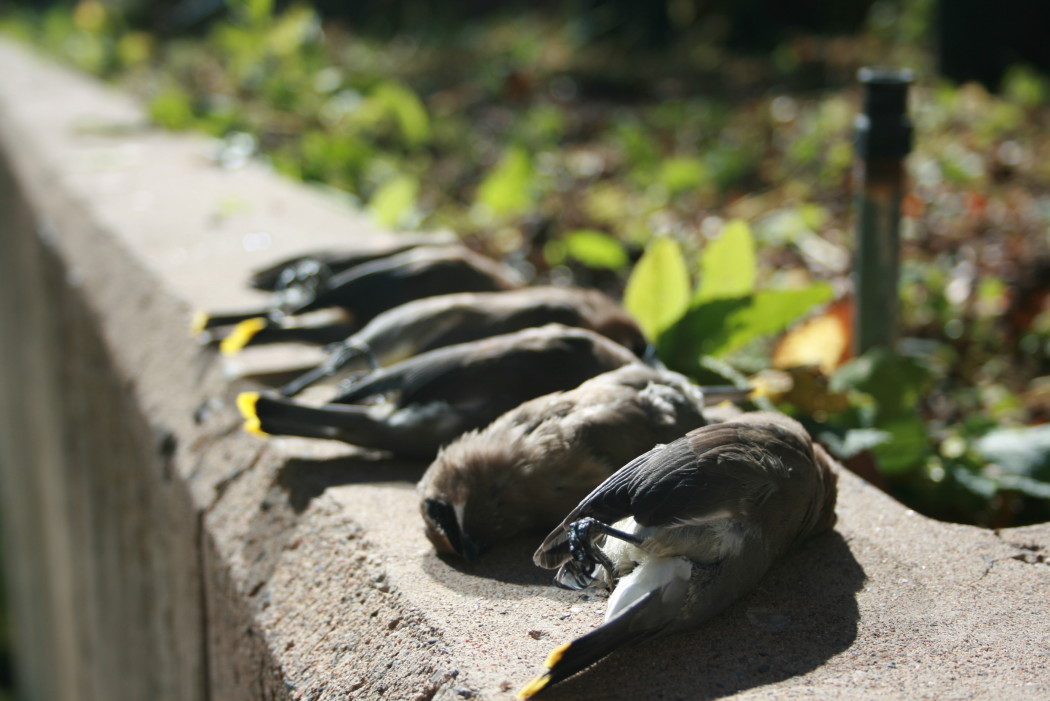Reflect on the birds: finding solutions for birds hitting reflective buildings
Utah State University, nestled in the mountains, is inevitably close to nature. As students walk to class they can see the mountains looming overhead, the white snow on the ground, and even the sun shining down on them in the summer months. Various wildlife can be seen, as well.
Unfortunately that wildlife is not always living.
USU has architecture allowing those on campus to enjoy an aesthetic feel. But for certain birds, this architecture is not always useful. Highly reflective glass can cause a bird to perceive that there is not a building in the path of flight, but simply continuing foliage. The birds inadvertently run into windows on campus. This usually creates a high death rate among the birds.
“This fall we were approached originally by the provost who had heard from several other people on campus that there was a problem,” said Jordy Guth, a planner for the committee exploring solutions for the bird deaths.
Professor Kimberly Sullivan has done research about this. As a professor of biology here at USU, she and the members of the committee are discussing solutions to this problem and hope to have some in place by spring.
“About 1 billion birds a year die due to windows in North America. Ninety-nine percent of bird deaths occur within the first five stories,” Sullivan said.
She said that a bird’s eye does not perceive things in the same way humans do.
“The avian eye is not the same as the human eye. Where we see things such as windows as a solid structure, birds don’t. Instead of seeing it as clear, they see it as an opening they can go right through. They will also see the sky and vegetation reflected in the window. They will see it as a tree they can land on instead of a reflection,” Sullivan said.
Birds also see a different spectrum of light than humans.
“A bird’s cornea allows them to see in UV, while we don’t,” Sullivan said.
One solution, called Ornilux glass, has ultraviolet stripes that are in the glass that birds can see, but the human eye can’t. Other solutions include putting tape in stripes on windows, overhangs, netting, tilting windows downwards so there is less reflection, and putting patterns or wrappers on windows.
“If we do invest in building wrappers, one of the first buildings we will put them on is the University Inn,” said Leila Neilson, the director for the University Inn.
According to Sullivan, the distance of trees and plants from windows makes a difference, too. If a tree is about 30 feet away, birds will speed up to get to it. Instead of hitting the tree, they may hit the window, due to the reflection of the tree in the window. But if a tree is right next to a window, the birds will not have enough speed to do any real damage to themselves if they do hit the window trying to land in a tree.
The new Aggie Recreation Center was built with this problem in mind. One of the most aesthetically pleasing aspects of the new building are the topographic lines put on windows. A bird will not try to fly through anything that is 4 inches in length and 2 inches in width or less.
“Our job is to come back and make a recommendation to Utah State University. They will establish some guidelines for new buildings that will be built,” Neilson said.
One committee meeting has been held so far to begin the process of finding solutions that are cost effective, aesthetically pleasing, and effective in saving the lives of birds.
“There were a couple things that we came away with in our first meeting. One was that we need to put in to place new guidelines for any new buildings on campus and second is that we need to educate more people on the campus,” Neilson said.
Plans are in place for an undergraduate study program to test different solutions and find which will work best, with Sullivan leading it.
— roniastephen@gmail.com

